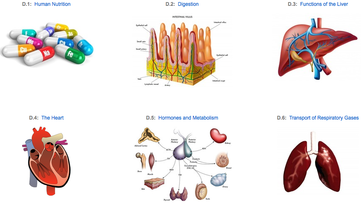Option D Human physiology
There are current no BioKnowledgy resources for this option. However some support can be found on other sites.
Biology for Life
The bullet points to help indicate the likely depth of understanding required and there are links to support learning.


